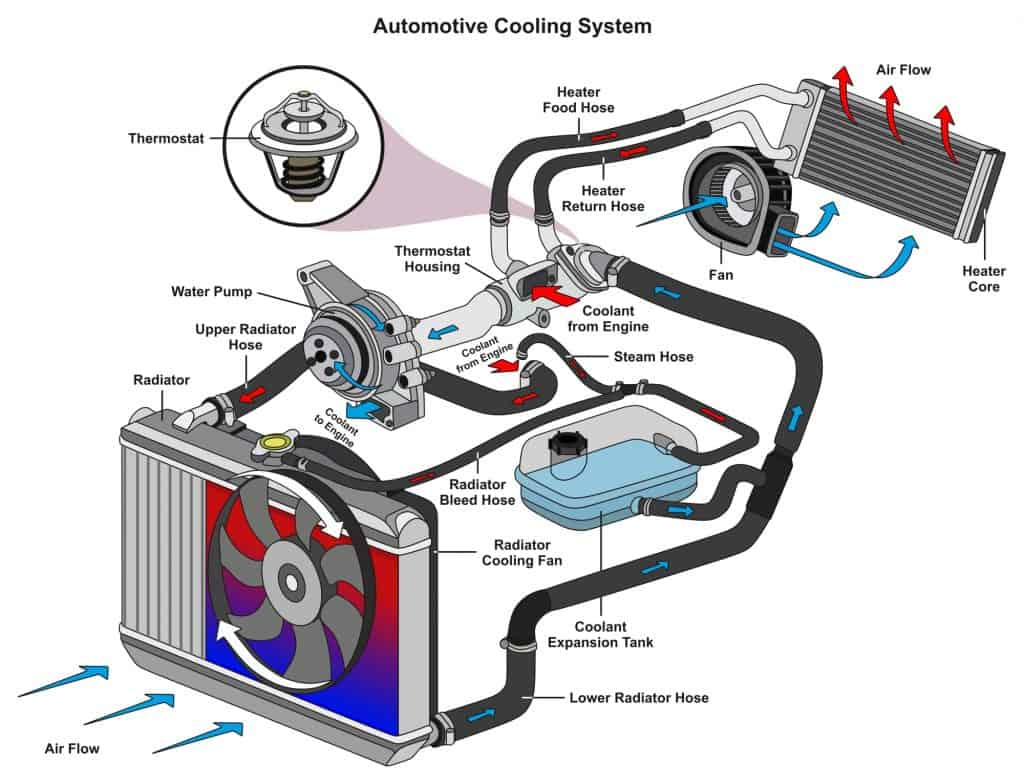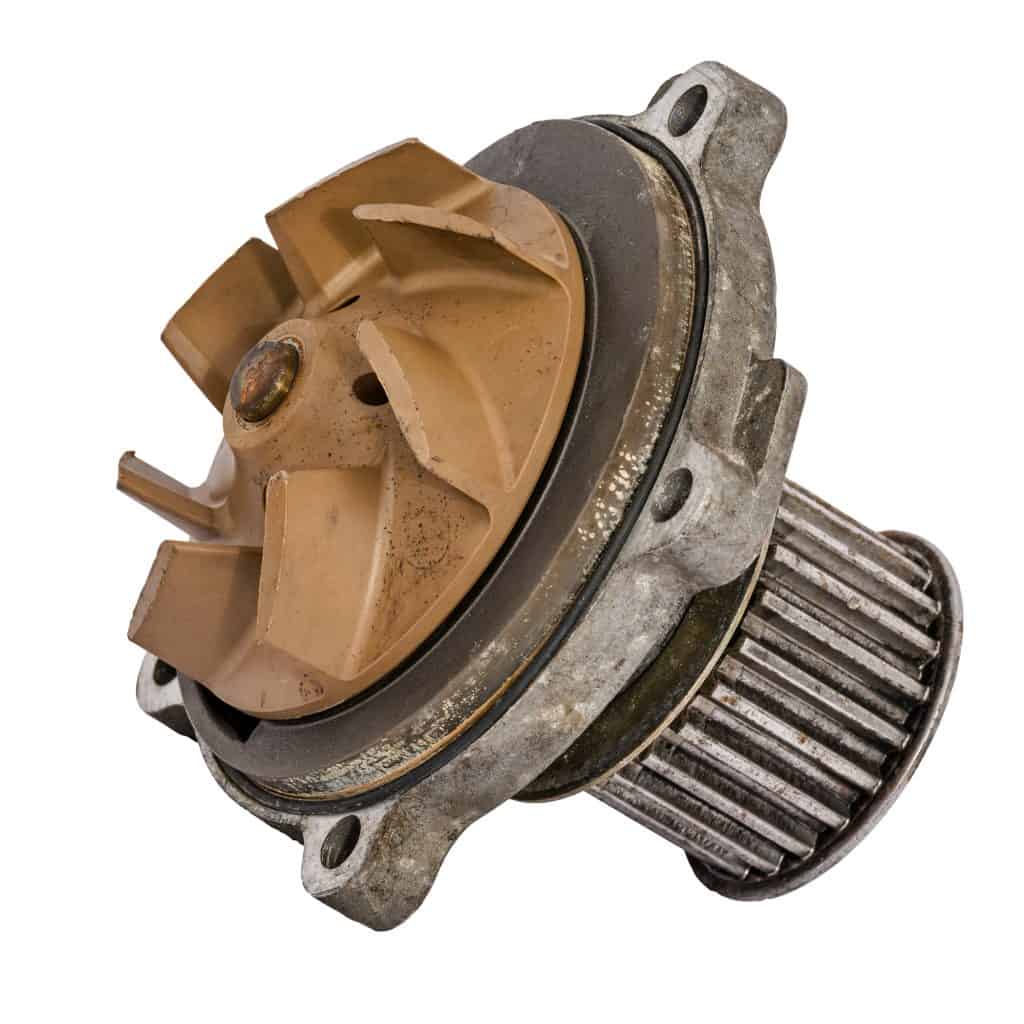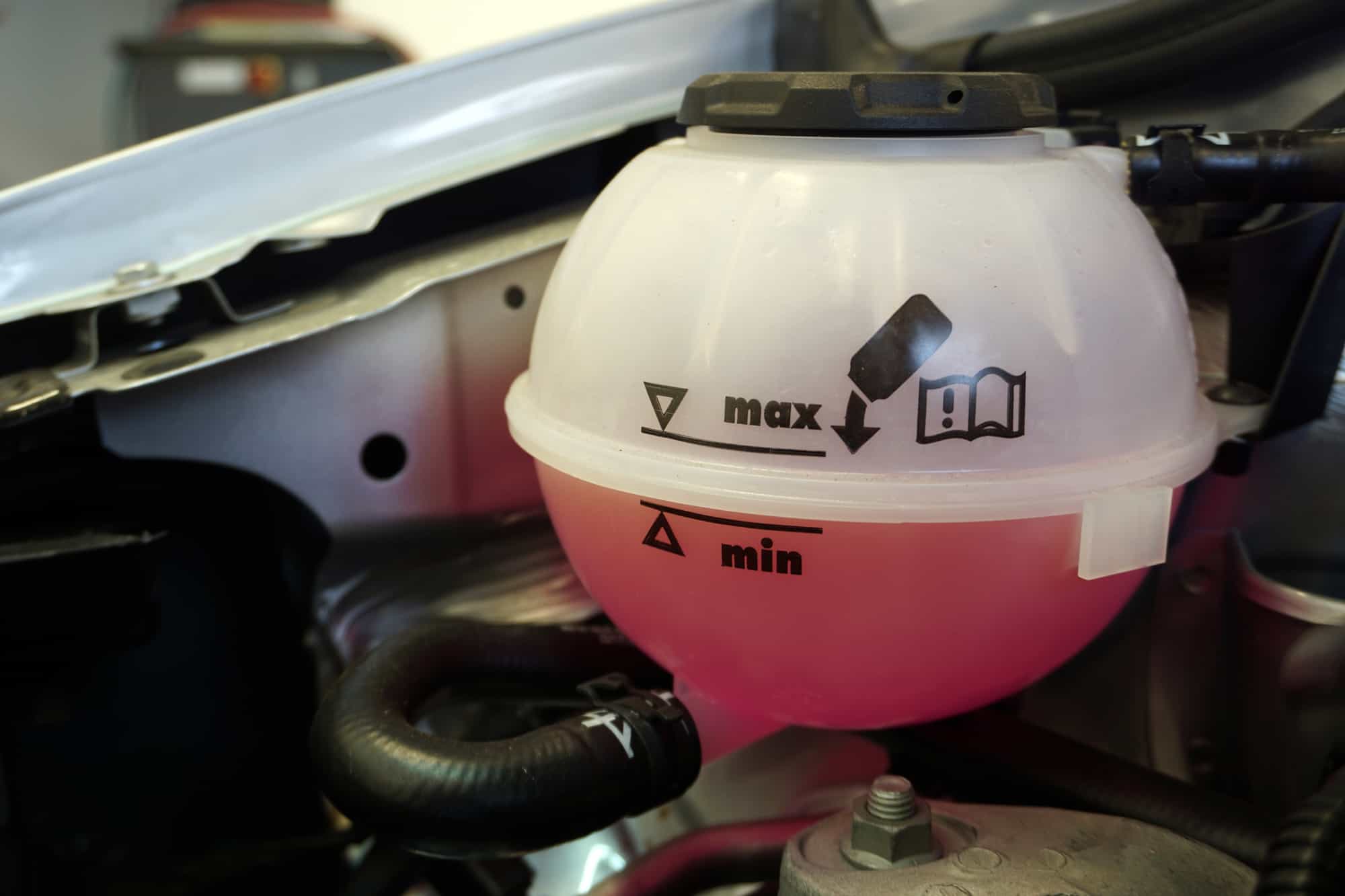Sometimes the source of a coolant leak from your vehicle can be difficult to find. It can be even more difficult when the coolant leak only occurs when the car is not running. So why would coolant leak from a car that is not running you may ask?
A coolant leak when the car is not running is likely due to a problem with the cooling system, which regulates the engine’s temperature. Common causes include a faulty radiator cap, a damaged or worn coolant hose, a crack or hole in the radiator or a faulty water control valve.
Coolant can leak from a vehicle that is not running because when the engine is off, the coolant is no longer under pressure and can pool in various places around the engine and can leak if there is a hole or crack nearby.
As an Amazon Associate we earn from qualifying purchases.
Where Can Coolant Leak From When The Car Is Not Running?
When your car is turned off, coolant will stop moving around and will tend to pool in various locations around the engine until the next time the engine starts.
Here are a few locations where coolant leak from if they are damaged or cracked.
1. From A Leaky Heater Core
A bad, leaky heater core will exhibit symptoms such as smell in the car, damp carpet from fluid leaking from behind the dashboard, windows that are constantly fogging up and a car heating system that doesn’t work.
The heater core is responsible for heating up the inside of your car when it’s cold outside. If the heater core isn’t working properly, then you’ll notice that the air coming from the vents in the car won’t be as hot as it should.
Coolant dripping from behind the dashboard is a sign that the heater core is leaking. Fluid will often tend to leak from a broken heater core when the car is switched off. This is because coolant will sit in the heater core if the heating is turned off, and is only pumped back out into the main cooling system when the engine is running and the heating is switched on.
If the carpet is wet in your car and it smells a bit like an engine bay, then chances are the heater core is leaking.
2. From A Loose Coolant Hose Clamp
Sometimes a coolant leak can be from one of the many hoses that make up the coolant system. If the leak is only present when the car is not running, this may suggest the leak is at the joint where the hose is clamped onto the engine.
As the engine heats up, the clamps holding the coolant hoses in place can sometimes expand a small amount. This can cause the hose to loosen slightly and this can cause a leak. If it’s an older vehicle, chances are the hoses will have hardened significantly and will not be flexible enough to tolerate any changes in temperature.
3. From A Leaking Radiator
If the radiator is cracked or is damaged, this can often be the source of a coolant leak, especially when the car is turned off.
When the engine is running, the coolant in the hoses and radiator are being pumped around the engine at high pressure. Coolant is taken from the hot parts of the engine and is channeled through the radiator where it is cooled before returning to the engine.

If there is a small crack or hole in one of the radiator fins, or where feeder hoses join the radiator, a small amount of coolant may escape when the engine is running. When the engine is turned off, the coolant will stop moving and will sit in the radiator and will be more likely to leak if there is a hole or crack present.
4. From A Loose Or Faulty Radiator Drain Valve
Some vehicle radiators come fitted with a drain valve that is removed when draining and flushing the coolant system. This can also be a source of coolant leaks if it loosens or if the rubber seals fail.
Just like with a damaged radiator, the coolant can escape through the drain valve when the engine is turned off. Drain valves are usually located at the bottom of the radiator, making it easy for coolant in the radiator to escape if the valve is damaged.
If the coolant system has not been flushed in a long time, the radiator drain valve can become stuck in place, and may be damaged when it’s removed. It’s always a good idea to replace the valve when carrying out a coolant service.
5. From A Failing Water Pump
A common sign of a failing water pump is fluid loss from the coolant system or leaking from the water pump itself.
Water pumps have a built in safety feature called the weep hole that can warn you of impending failure of the pump
This small, unplugged hole on the water pump allows coolant or oil to escape from the inside of the water pump when one of the internal seals has failed. If oil is dripping from the hole, then the internal oil seal is failing. Coolant or water dripping from the weep hole means the internal water pump seal is worn out.

A large amount of coolant leaking from the water pump when the car is turned off can be caused by a failed water pump sealing gasket. This is the gasket between the water pump and the engine block.
How To Locate The Source Of A Coolant Leak That Only Occurs When The Car Is Turned Off
The method for finding a coolant leak that only occurs when the engine is off, is much the same as that for finding any coolant leak.
The best way to quickly find a coolant leak is to pressure test the coolant system. Pressure testing the system allows you to simulate coolant pressure without running the engine.
It’s also easier to check for leaks at different coolant pressures and leaks that are only occurring under no pressure.
How To Pressure Check A Car For Coolant Leak When Turned Off
Step 1 – Before you start, check the amount of coolant in the coolant reservoir and top it up with water if necessary. Don’t use coolant to top it off, as you’ll only waste coolant if there is a leak in the system
Step 2 – You’ll need a handheld pressure tester to pressurize the system. You don’t need to purchase a big expensive kit, a basic pressure tester with a few adapters will do like this Mityvac kit (Amazon.com link).
Check the cap from the coolant reservoir to see what pressure you need to pump the system to. (it should be printed on the cap). You may need to use an adapter to screw the pressure tester on to to the coolant reservoir.
Step 3 – Now slowly start pumping the tester. If there is a leak in the system you may start to hear coolant dripping as you increase the pressure. As you are checking for a leak that occurs with the engine off, you probably won’t see any leaks yet.
Step 4 – When the system is fully pressurized, leave it for 5 minutes and then start checking for leaks. Common areas for leaks to occur are at hose joints, the bottom of the radiator, around the water pump and around the base of the coolant reservoir.
Step 5 – If there are no leaks at full pressure, release some of the pressure from the system, wait a few minutes and check again for leaks. Repeat this process until the system is fully de-pressurized.
Step 6 – If you still can’t find the source of the coolant leak, top up the coolant reservoir again and double check that there are no coolant wet patches on any of the hoses or around the radiator. Leave the engine for 30 minutes before checking again. You may need to repressurize the coolant system again and depressurize it to simulate the engine running and turning off.
Step 7 – If there is a leak somewhere in the engine bay you will find it by using this method. If the leak is coming from the heater core it may be more difficult to pinpoint as most of the heater core components are hidden behind the dashboard. You may need to disassemble the dashboard to get to the heater core to check it for leaks.
As an Amazon Associate we earn from qualifying purchases.































I’ve been noticing a damp smell and moisture in my car’s interior, especially near the dashboard area, and I wondered if this could be related to a coolant leak. How can I confirm if the heater core is the source of this leak?
I’ve noticed my car’s carpet is damp and there’s a peculiar smell inside, especially after I’ve driven it and it’s been parked overnight. Could this be related to a coolant leak, and what steps should I take to confirm it and fix the issue?